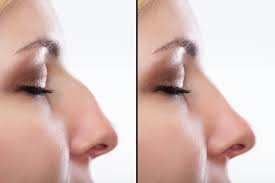
Rhinoplasty is a popular cosmetic procedure designed to reshape the nose for aesthetic or functional reasons. While it can enhance facial harmony and improve breathing, it is a complex surgery with potential risks. Before undergoing the procedure, it’s essential to understand the complications that may arise and how to mitigate them.
Common Risks Associated with Rhinoplasty:
Infection and Healing Complications:
Like any surgical procedure, Rhinoplasty (تجميل الأنف ) carries a risk of infection. While rare, improper post-operative care or exposure to bacteria can lead to complications. Signs of infection include redness, swelling, discharge, and fever. Following aftercare instructions, keeping the surgical site clean, and taking prescribed antibiotics can significantly reduce the risk.
Breathing Difficulties:
One of the primary reasons people seek rhinoplasty is to improve breathing issues. However, if the nasal passages are altered too drastically, it can result in new or worsened breathing difficulties. Over-reduction of nasal structures can cause airway obstruction, making it difficult to breathe through the nose.
Unsatisfactory Aesthetic Results:
Despite careful planning, some individuals may feel disappointed with the outcome of their rhinoplasty. Issues such as asymmetry, an unnatural appearance, or failure to meet expectations can lead to dissatisfaction. In some cases, revision surgery may be required to achieve the desired look.
Excessive Bleeding and Hematoma Formation:
Bleeding is a common occurrence after surgery, but excessive bleeding or hematoma (blood pooling under the skin) can pose risks. Patients should avoid blood-thinning medications and strenuous activities during recovery to minimize the likelihood of complications.
Scarring and Skin Issues:
Open rhinoplasty, which involves external incisions, may leave visible scars if not properly cared for. Additionally, some individuals may experience skin discoloration, thinning, or irritation around the surgical site. Proper wound care and sun protection can help prevent long-term skin issues.
Nerve Damage and Numbness:
Temporary numbness around the nose and upper lip is common after rhinoplasty. In rare cases, nerve damage can lead to prolonged numbness or loss of sensation. This risk is typically minimized when performed by an experienced specialist.
Septal Perforation:
The nasal septum, which divides the nostrils, can develop a hole (septal perforation) during surgery. This can lead to breathing difficulties, nosebleeds, and whistling sounds when breathing. Corrective procedures may be needed to repair the perforation.
Prolonged Swelling and Delayed Healing:
Swelling is a normal part of rhinoplasty recovery, but in some cases, it can persist for months or even longer. Factors such as skin thickness, individual healing responses, and post-operative care affect how quickly the swelling subsides. Using cold compresses, maintaining hydration, and following recovery guidelines can help speed up the process.
Anesthesia-Related Complications:
Rhinoplasty is performed under general or local anesthesia, which carries inherent risks. Although rare, some individuals may experience adverse reactions such as nausea, dizziness, or more severe complications like allergic reactions.
How to Minimize the Risks of Rhinoplasty?
Thorough Research and Consultation:
Understanding the procedure, its limitations, and potential risks before committing to surgery is crucial. Having a detailed consultation to discuss expectations, medical history, and surgical techniques can help prevent complications.
Following Pre- and Post-Surgery Instructions:
Adhering to pre-operative and post-operative care guidelines significantly reduces risks. Avoiding smoking, alcohol, and certain medications before surgery, as well as following proper wound care and lifestyle adjustments afterward, enhances healing and minimizes complications.
Realistic Expectations and Patience:
Rhinoplasty results take time to fully develop. Swelling and changes in nasal shape may persist for months. Understanding that final results may take up to a year to fully appear helps set realistic expectations and reduces post-surgery anxiety.
Healthy Lifestyle and Recovery Practices:
A healthy diet, proper hydration, and sufficient rest contribute to a smoother recovery. Avoiding strenuous activities, keeping the head elevated, and protecting the nose from accidental bumps help prevent complications.
Final Thoughts:
Rhinoplasty (تجميل الأنف ) can provide transformative results, but it’s essential to be aware of the potential risks. Careful planning, proper post-operative care, and setting realistic expectations can lead to a successful and satisfying outcome. By understanding the possible complications and taking steps to minimize them, individuals can make informed decisions and enjoy the benefits of rhinoplasty with confidence.







